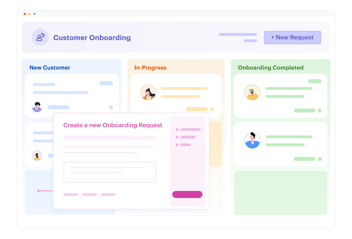As ecommerce gains more and more traction, brick-and-mortar retail stores are forced to double down on the diminishing advantages they have over the digital experience. One main advantages retail stores claim is the level of customer service they can provide. Yet, many shoot themselves in the foot with cumbersome approval processes that actually make customers wish they had stayed home.
In most traditional retail shops, floor associates seem to have the authority of a peon of a vast empire, not able to do much more than offer a cheesy smile. Processes involving solving complaints, answering queries, and taking feedback meet a giant bottleneck as the rest of the world is left waiting on the magic world from a faceless manager sitting in a different location.
What is Customer Service Workflow?
A customer service workflow is defined as the process that helps service professionals solve problems, fulfil requests, and drive value delivery for their customers consistently. It is a vital tool in ensuring customer queries are addressed in a timely manner, investigations are carried out thoroughly, and adequate resolution is brought about every time for increased customer satisfaction and retention.
By taking advantage of retail process automation, physical retailers can reclaim customer service as a strength rather than a liability. Here are some easy ways to smash the bottlenecks and let your customers enjoy the physical experience rather than avoid them.
Identify and eliminate 5 bottlenecks that can hinder retail customer service with workflow software for enterprises.
1. Empower Front Line Employees
The Ritz-Carlton is famous for its policy of permitting every employee to spend up to $2,000 to make any single guest satisfied. You may not be able to make the same lofty promise, but you can create fast workflows to put more power in the hands of your front line employees.
2. Out-of-stock Items
Suppose a rather large customer comes in requesting a size 15 shoe. Traditional processes usually involve a lot of phone calls to other outlets, warehouses, and managers. But an automated system means that within minutes, the perfect size shoe is already on the way to be delivered to the customer’s home.
3. Managing Inventory
Sometimes your on-the-ground resources notice a supply issue long before any algorithm or software can pick it up. If an automated workflow is in place, when an associate notices a particular shirt is selling quickly, a new shipment can arrive by the evening.
4. Irate customers
The only thing that gets a customer madder than bad customer service is dealing with someone who is powerless to do anything in the moment. The longer a delay in resolving a dispute, the more bitterness and rage builds up in the customer that you will never be able to overcome. Every minute counts when dealing with an upset customer, and automation might be the thing that turns a potentially bad situation into a loyalty-building experience.
5. Refund Approvals
Anytime a refund must get a special review, it conjures up images of greedy men in suits meeting around a table in a dark room. Quick, automated processes will restore your customer’s faith that you have their best interests at heart.
Creating an automated retail process workflow is all about saving time and streamlining business processes. In an industry like retail, every effort must be made to offer a fantastic experience, which includes brilliant customer service. Smash the bottlenecks that are getting in the way of setting you apart from every other retailer.
Try Kissflow Workflow for free and experience the kind of powerful experiences you can create!



